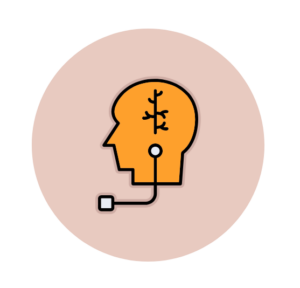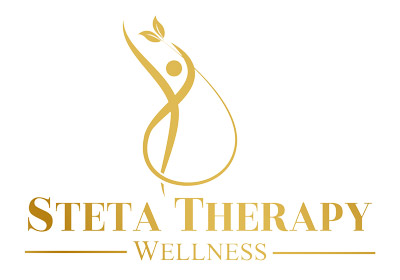
03 Mar Understanding Co-Regulation and Emotional Connection
Have you ever felt a sense of calm when talking to someone who genuinely listens? Or perhaps a sudden wave of unease in response to another person’s anxiety? These experiences highlight an essential psychological and physiological process known as co-regulation. Rooted in Polyvagal Theory, co-regulation plays a crucial role in emotional well-being, helping adults navigate complex social interactions.
Mastering co-regulation can strengthen relationships, enhance self-awareness, and foster healthier social dynamics. Let’s explore what it means and how to incorporate it into daily life.
What is Co-Regulation?
Co-regulation refers to the mutual exchange of emotional and physiological cues between individuals that create a sense of safety and connection. It’s a shared experience in which nervous systems communicate through body language, tone of voice, and facial expressions to regulate emotional states.
Unlike self-regulation, which focuses on managing emotions independently, co-regulation relies on positive social interactions to achieve emotional balance. Importantly, it differs from co-dependency, which involves an unhealthy reliance on others. Co-regulation fosters mutual, adaptive relationships built on trust and stability.
Why Co-Regulation Matters for Adults
Emotional safety is the foundation for healthy relationships, effective communication, and conflict resolution. While often discussed in the context of child development, co-regulation is equally essential for adults. Whether in romantic relationships, workplaces, friendships, or family dynamics, co-regulation influences our ability to connect, collaborate, and maintain emotional well-being.
The Role of Polyvagal Theory in Co-Regulation
Developed by Dr. Stephen Porges, Polyvagal Theory explains how our nervous system responds to social cues, stress, and connection. It consists of three key states:
- Safety and Social Engagement: This state, driven by the vagus nerve, allows us to feel calm, connected, and open to interaction.
- Fight or Flight: Triggered by perceived threats, this state prepares the body to react defensively.
- Shutdown or Freeze: A state of immobilization caused by overwhelming stress, leading to emotional withdrawal.
The vagus nerve plays a critical role in bridging emotions and bodily functions. Through positive social cues, such as warm facial expressions and soothing tones, we can activate the vagus nerve to create emotional stability and safety.
Everyday Examples of Co-Regulation in Adult Life
Co-regulation is not just for children; it is vital in our daily adult interactions. Here are some real-life scenarios demonstrating its impact:
1. Strengthening Romantic Relationships
Jordyn, an educator in her 30s, found that practicing active listening and using soft eye contact improved her connection with her partner. Their nervous systems naturally synced, reducing conflicts and deepening intimacy.
2. Managing Anxiety in Social Settings
James, a client who struggled with anxiety, noticed that being intentional and choosing who he surrounds himself with at work, in this case, those who were calm and empathetic coworkers, helped him transition from a heightened stress response to a state of emotional security.
3. Enhancing Workplace Dynamics
Ashley, a team leader who attended one of my recent trainings, applied co-regulation techniques during tense meetings by softening her tone and mirroring her relaxed body posture. This created a calmer atmosphere, leading to more productive discussions.
4. Parenting with Co-Regulation
Amelia, a client who is a new parent, learned that staying calm helped her soothe her baby. She later applied these skills in her marriage, using calm communication to foster a peaceful home environment.
Practical Strategies to Enhance Co-Regulation
Integrating co-regulation into daily life can improve relationships and emotional resilience. Try these actionable techniques:
- Practice Active Listening – Give full attention in conversations. Use eye contact and reassuring gestures to show understanding.
- Mind Your Tone and Posture – Speak in a calm tone and maintain relaxed body language to create a safe emotional space.
- Cultivate Self-Awareness – Check in with your emotional state before engaging with others. Breathing exercises can help you stay grounded.
- Engage in Reflective Communication – Validate others’ feelings by restating their concerns (e.g., “It sounds like today was really stressful for you.”).
- Use Physical Touch (When Appropriate) – Light touches, such as a gentle hand on the shoulder, can activate the nervous system’s calming response. With an intimate partner, family member, child, or sibling, try a 6 second hug (or 10 seconds if you have the time!) to release oxytocin, the happy hormone that nurtures positive emotions and safety. Trust me… your nervous system will thank you both.
- Build a Supportive Community – Surround yourself with people who foster emotional safety and encourage meaningful social connections.
Cultivating Emotional Safety Through Co-Regulation
Co-regulation is a powerful tool that enhances emotional health, deepens connections, and fosters resilience. Paired with Polyvagal Theory, it teaches us that emotional safety is a physiological reality, not just an abstract concept. By integrating these techniques into your routine, you contribute to a more empathetic and emotionally intelligent society through your presence.


Sorry, the comment form is closed at this time.